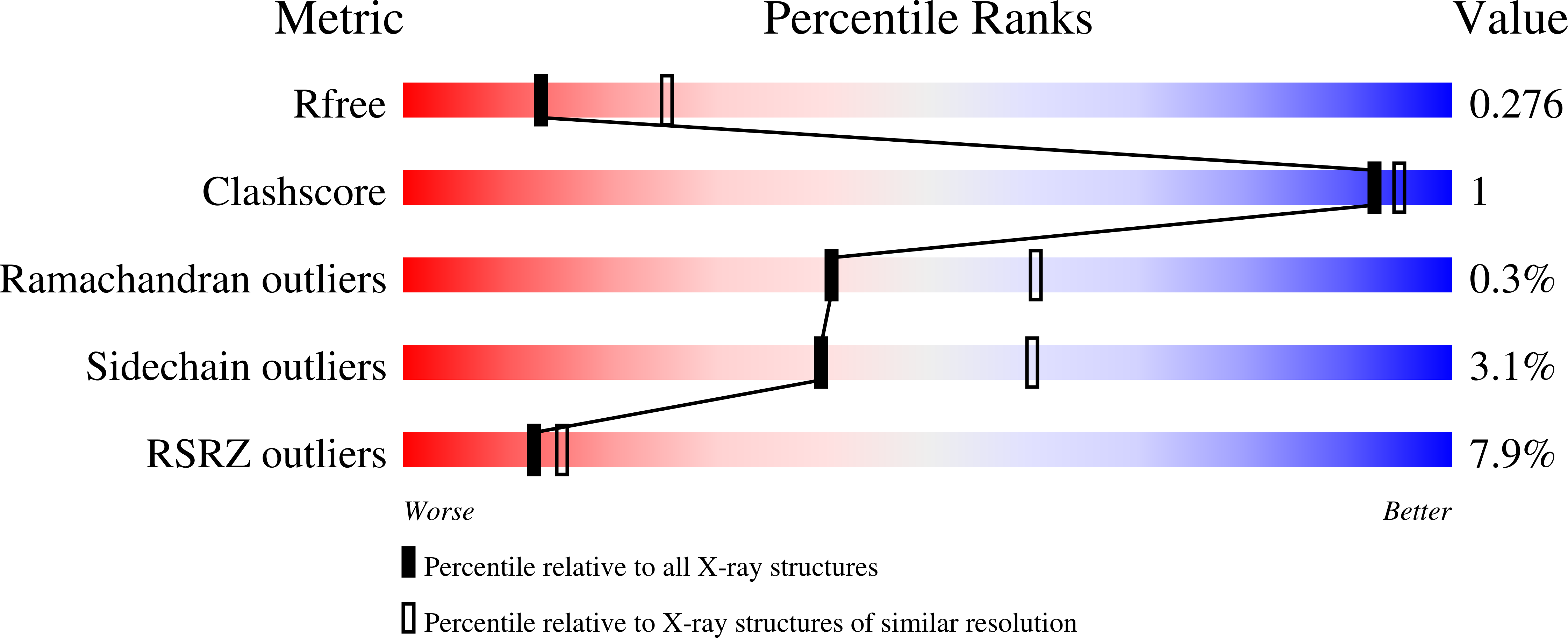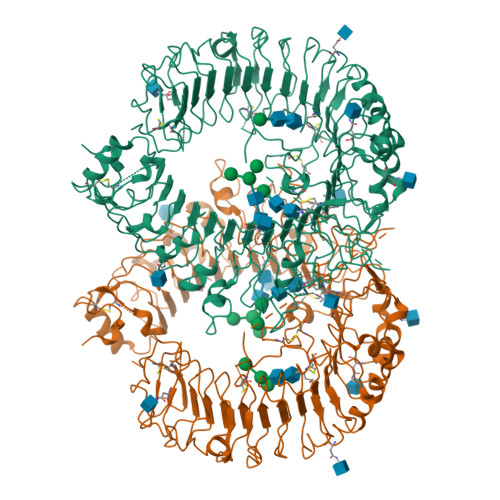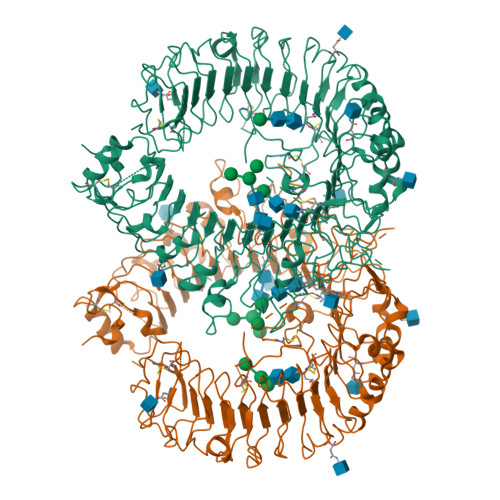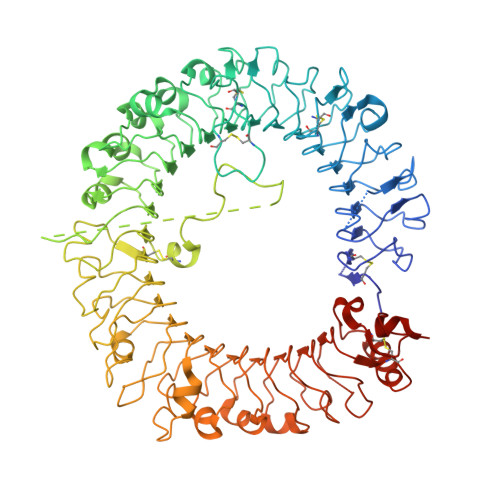Identification of 2-Pyridinylindole-Based Dual Antagonists of Toll-like Receptors 7 and 8 (TLR7/8).
Sreekantha, R.K., Mussari, C.P., Dodd, D.S., Pasunoori, L., Hegde, S., Posy, S.L., Critton, D., Ruepp, S., Subramanian, M., Salter-Cid, L.M., Tagore, D.M., Sarodaya, S., Dudhgaonkar, S., Poss, M.A., Schieven, G.L., Carter, P.H., Macor, J.E., Dyckman, A.J.(2022) ACS Med Chem Lett 13: 812-818
- PubMed: 35586440
- DOI: https://doi.org/10.1021/acsmedchemlett.2c00049
- Primary Citation of Related Structures:
7RC9 - PubMed Abstract:
The toll-like receptors (TLRs) play key roles in activation of the innate immune system. Aberrant activation of TLR7 and TLR8 pathways can occur in the context of autoimmune disorders due to the elevated presence and recognition of self-RNA as activating ligands. Control of this unintended activation via inhibition of TLR7/8 signaling holds promise for the treatment of diseases such as psoriasis, arthritis, and lupus. Optimization of a 2-pyridinylindole series of compounds led to the identification of potent dual inhibitors of TLR7 and TLR8, which demonstrated good selectivity against TLR9 and other family members. The in vitro characterization and in vivo evaluation in rodent pharmacokinetic/pharmacodynamic and efficacy studies of BMS-905 is detailed, along with structural information obtained through X-ray cocrystallographic studies.
Organizational Affiliation:
Biocon Bristol Myers Squibb Research Center (BBRC), Bangalore 560099, India.





















